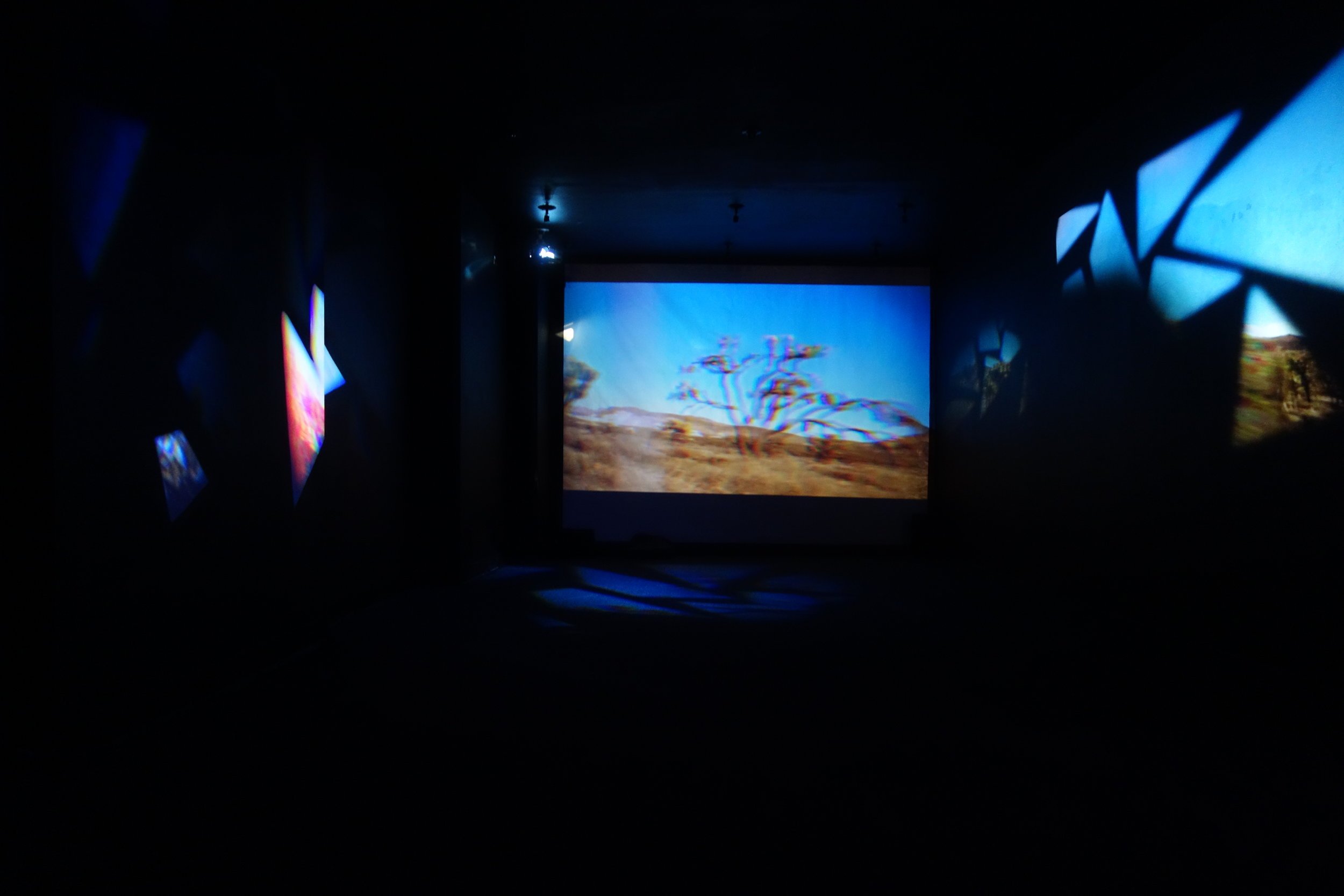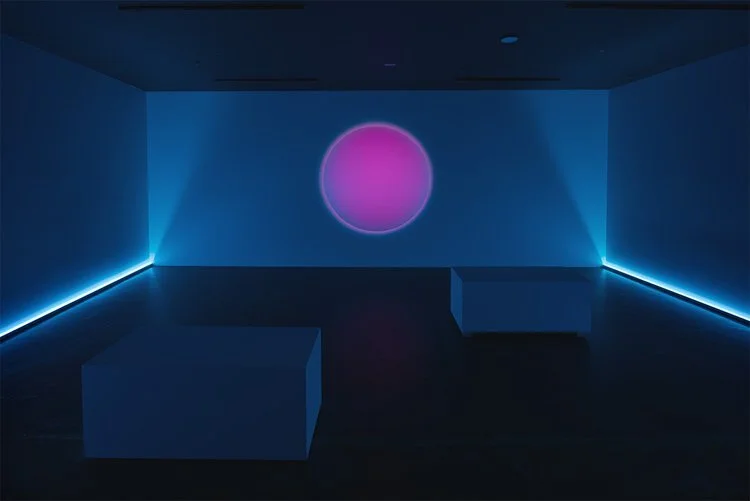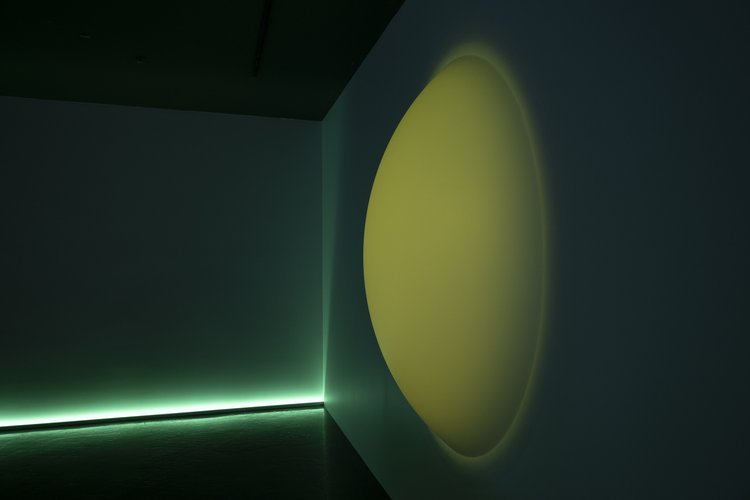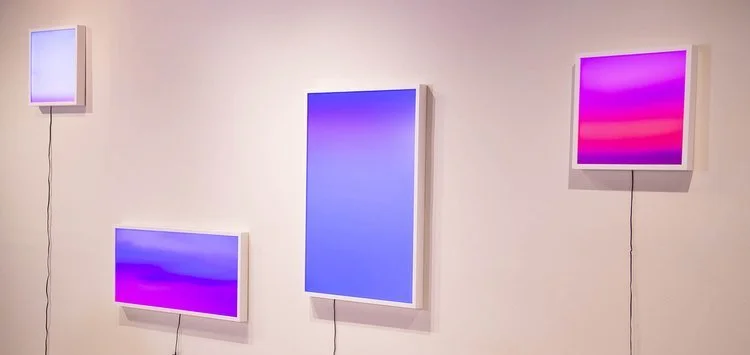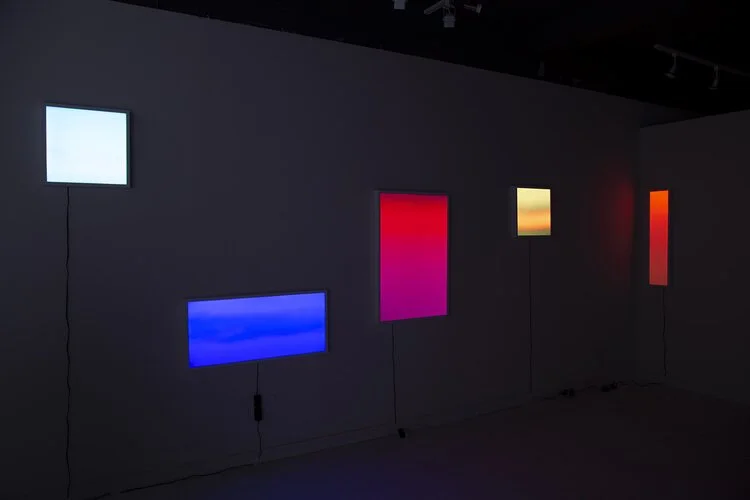Artist Spotlight: Annie Briard
In conversation with Art & Curatorial Coordinator Mariana Rivera, Vancouver-based artist Annie Briard shares more about her ecology-inspired practice, how she explores the dynamic viewer experiences in her work, and dives into the recent collaboration with us on the luxury multifamily development One Burrard Place in Vancouver.
Video transcript has been edited for clarity and brevity
Annie:
My name is Annie Briard and I am an expanded photography artist. I work within the realms of photography, installation, media art, which takes me anywhere from gallery kind of shows all the way to large scale, monumental public art.
Second Sight, 2019
Image credit: Annie Briard
Popup Home, 2017
Image credit: Michael Love, courtesy of City of New Westminster
The focus of my practice has always been around finding ways to better understand and communicate our experience of reality and the world around us. And so all of the projects that I do essentially culminate into conversation starters. Experiences that are deeply affective and that prompt us to sort of check in with one another as something embodied humans to see if we can we can gather more pieces of the puzzle about this wild ride that we're on here all together.
Within my projects, I'm always thinking about the different things that mediate our experience of the world. So those include anything from the the physical realities of how our bodies function and malfunction, physics of light in particular. But then also things like our mood and our memories of past experiences. Each project will choose to focus maybe on a couple of these different aspects and treat that in a number of ways.
One project that I've done in the past was an immersive installation, exploring after images or the the sort of patterns that remain in our eyes after looking up at the sky and then sharing those as a way to impress upon the retina of the viewer as well.
Staring At The Sun, 2022
Image credit: Ricardo Savard
Other examples include 3D photography projects where the 3D experience is kind of simulated and fabricated in such a way as to create a viewing experience of an image that feels almost more tangible and palpable than being in a space in reality.
Mariana:
Is that connected to your recent show, Superlucent at Monica Reyes Gallery? Is that kind of what you're referring to with these color shifting artworks that are playing with our perception and making us be more present with the artwork rather than just experiencing it at once in an instant?
Annie:
So, yes, that's great. Whatever media I'm using is chosen to reflect a particular idea, and it's very rare that just kind of straight up singular shot photography works for me. One example of some time based photography that I've done includes the series Horizon RGB. These are photographs of the horizon line that slowly shift through the full visible spectrum over time, over about 15 minutes.
Image credit: Annie Briard
And what I was thinking about when I created these was how well, a couple of things, how so much of what we base our knowledge of reality on is based around what we're seeing. But there are so many things that we're perceiving. There's so many myths of vision and, in particular, conventions of the language of vision and visual culture that we adhere to. And that then maybe put up some blinders for us that stop us from seeing things as they really are. And one of those is, I suppose, the the horizon line.
I love using the horizon line as a metaphor for all of this because we base so many instances of our lives on on the horizon line, in particular our buildings, right? Architecture, we're thinking about perspective. We're thinking about the horizon line and we're basing so much on that. The horizon is something that is completely ephemeral, intangible impalpable. It's not a place, it's kind of a no place. And yet we all sort of agree that that it is still there and that it is still a thing, but it's got this really kind of tricky, slippery nature to it.
I use the horizon line in that series and then further was thinking about its slippery nature and how we're always misperceiving it. And I was wondering, "would shifting its color help give us more information? Would it be possible to make a photograph look truer if I was able to maybe match exactly kind of that that moment with the color?” And so I'm using I basically program my own software and do my own electronics to create these these printed photographs that yeah, that change through the visible spectrum.
Mariana:
I love that idea of the horizon line being something that we're so also so used to. It's part of our daily life and we base so much of our reality on it. I think that's such an important exercise for us to constantly be doing of questioning just what we're used to and what we take for granted as knowledge and portraying that through art. Especially artwork like the series that you have done that was shown at your recent show Superlucent | All The Color You Cannot See at Monica Reyes Gallery here in Vancouver. There's so much deep thought and concept that goes into your work but at the end it's also so visually striking and immediately beautiful and stunning.
Image credit: Annie Briard
Annie:
Thank you. The idea behind those is to really also exemplify the ways in which we each experience the world differently through vision and how we each have a different kind of perceptual experience. When I was dreaming up the idea for this series, I was just thinking, “Oh, wouldn't it be amazing if I could create a piece that literally everybody will have unmistakably a unique experience of. And so I'm looking at it now, for example, and the horizon line is blue, so in my mind, maybe feelings of dusk, maybe coldness, maybe even sadness [arise].” Whereas you might look at it at a different moment in its cycle and have a completely different understanding and say, “No, it was sunrise and feelings of warmth and happiness.” That little kind of game or that conversation piece was something that got me really excited. I think that if I can do that with my work – if I can create these opportunities for different people to commune together and to ask each other about their experiences of the art – then maybe by extension of the world as well, I feel like I'm achieving my goals.
Mariana:
That’s beautiful. I think that kind of leads us and relates to the work that we did together for your In Possible Lands series and the placement of what we did with your work and where we placed it in our clients’ residential project One Burrard Place in Vancouver. Maybe right now we can talk about what the series is, where it comes from, and what your inspiration is behind In Possible Lands.
Annie:
I've always been really concerned by and invested in environmental ecology, sustainability, and thinking through ways that maybe my art can address the position that I take in my daily life. But then thinking of that creatively as well, I had recently received a whole archive of 35 mm slides from my father who had shot these almost 50 years ago when he was 18 year old, and had done the long journey between Quebec and B.C. to come work on the railroads here in B.C. while he was studying geology. He gifted me this archive and told me I could do what I wanted with it. And almost immediately I knew that I had to reshoot these locations because some of them have changed drastically – like some of the glaciers in the Rockies for example – the way that he shot them would be impossible to shoot today.
So, I went on my own trip and reshot a lot of these locations using the same technology that that he was using: 35 mm colored slides. Then I sort of compared them and viewed them in my studio. I projected them through three projectors, mixing the new slides with the archival slides and doing it at a syncopated rhythm so that I could create an almost infinite new number of images.
These new images felt like they were foretelling the future maybe, or prescient in some way, because they were kind of comparing the past to the present, but mixing them up through some kind of alchemy that gave us glimpses into what could happen. So, for example, there are scenes where you see a glacier with some palm trees nearby. There are lakes that seem to be frozen in time. There are elements of rocks and geology that suddenly seem impossible in their formation. And yet, I think that there's a certain truth that emerges from those images.
Mariana:
That's beautiful. There's so much to that series. There's that environmental aspect, but then there's something very intimate about the collaboration between your dad and yourself and a collaboration through time. It's just visually so appealing. But like the rest of your work, there's levels of depth that go beyond just how visually striking they are.
Going along with that, the placements that we did for One Burrard Place are mostly wall coverings of the residential floors’ elevator lobbies. It would be interesting to hear you talk about why you thought this placement was interesting and what you hope these works can offer to the residents through their unique application.
Annie:
What interested me about the location at One Burrard Place is that these are transitional spaces. These are spaces that Michel Foucault would have considered as heterotopic spaces – spaces that exist in a number of different ways, similar to simultaneously spaces that we experience while we are daydreaming, while we're on our way to something.
I love this idea of going on a ride because it's a significantly tall tower, and thinking about the long elevator ride and then coming out and being just faced with this extremely immersive, very saturated, and vibrant scene of a potential future environment and the feelings of hope that would come from that. The feelings of considering one's environment and landscape and also this kind of conversation piece as well where residents and visitors might be able to discuss their experience of the work. Or maybe the work will make them remember backcountry camping trip or something that they did outdoors or some hopes that they have.
Mariana:
I'm personally very jealous of the residents of One Burrard Place because they're just going to have such an intimate connection with your work after living there, especially because they'll get familiar with the work on their floor. But they'll also get glimpses at other works while they're on the ride with other residents as each level is a different work, so they're kind of going through a gallery show or a series of your work as they ride up the elevator to their home, which is so unique and so exciting. And we're just very proud and happy that we got to collaborate on this wonderful project together.
Annie:
This project has opened up some new kind of ideas for me and possibilities in the past. The way that I've presented work has been really through gallery shows, which are always, of course, very limited in terms of their time and and how people can interact with the work. It's usually during daylight hours, etc., etc.. There are all kinds of sort of constraints there or in public art situations. And so of course some of the gallery works end up in people's homes, right? Collectors will buy these pieces and then they can live with them. But this was a really nice experience to be able to think of this huge community of people that would be able to engage with these images on a daily level, and that would become almost woven into the fabric of their daily lives. I just feel so honored to be able to have work that may become the backdrop for interesting conversations or memories, and that may influence people in ways that I could never even dreamt of. So I'm tremendously proud of our collaboration here.
I wonder if we'll ever hear back from some of the residents that might get in touch and then tell us about their experience? I really hope so.
Mariana:
I think so. I hope so too. Especially because there is a didactic panel in the common area where we speak about your work and we would name you as the artist. And just like you said, I think it's going to be so intertwined with their lives that it's a great opportunity for you as an artist to accompany all these strangers throughout their life in a way from an outsider’s perspective. But also, I think it's such a unique opportunity for the residents because they get to live with artwork that goes way beyond just decoration, and that has all these levels of depth and meaning that allow for connections to be built with that artwork. I think there's so many benefits to working with artists like yourself that have such a strong conceptual background and underpinning to your practice and to your work, because it allows us to put work out into the world that has more depth, meaning, value, and opportunities for connection. So I think we're also very proud and honored to have placed your work in this project.
Annie:
And I love your commitment to that. I think that there are so many art consultants that work with developers and where the art is really just seen as decoration or just kind of filling a certain void. But what's been amazing with with working with Farmboy is that from the beginning, it was really clear that your client and I and my practice were being matched because of the similar visions, goals and missions that we shared, so I really appreciated that aspect.
Mariana:
Thanks so much, Annie. We loved working with you too. I think it was definitely a mutually beneficial and just positive experience in so many ways, and we can't wait to just keep watching what you do in your career and to keep being your fans and hopefully finding ways in the future to keep working together, but definitely always just keep supporting you from afar.
